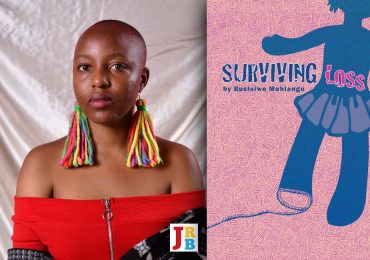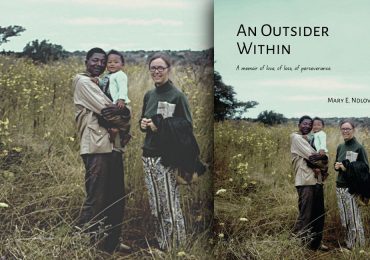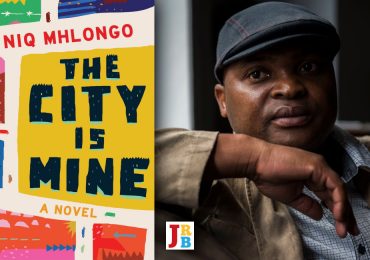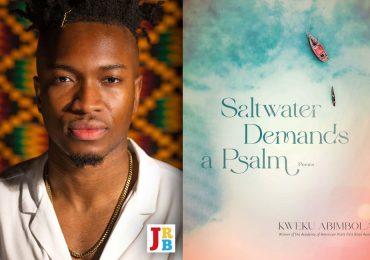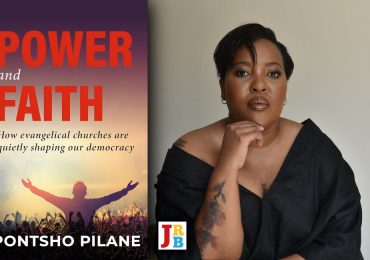Award-winning author Imraan Coovadia chats to The JRB Editor Jennifer Malec about the mechanisms of good and evil, emailing Wouter Basson, and his new book, The Poisoners.
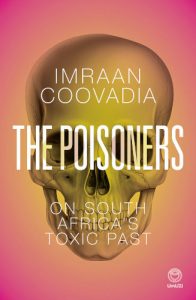
The Poisoners: On South Africa’s Toxic Past
Imraan Coovadia
Umuzi, 2021
Jennifer Malec for The JRB: Some may wonder why a novelist would write a non-fiction book on poisonings, but to me it makes perfect sense—the two seem inexorably linked. In your last novel, A Spy in Time, poison comes up a couple of times—arguably a necessity in espionage fiction—and I’ll ask you about Green-eyed Thieves in a bit. Was it your fiction that sparked your interest?
Imraan Coovadia: Look, writers need to keep their eyes open. What I could bring to this material, as a fiction writer, was an interest in the forms of storytelling which poisons and imaginary poisons lend themselves to. The sphere of gossip, rumours and corrupting storytelling which possesses our country from top to bottom is clearly visible in this history of poisoning and poisoning stories. In general writers sometimes have a good sense of reality, and realism, because we distinguish professionally between non-fiction and fiction. We know when we’re inventing stories, and when we’re not, and maybe have a fair sense of when other people are.
The JRB: In the Introduction to The Poisoners, you point out that the stories you are investigating ‘should have been fully explored and pursued by prosecutors, politicians, reporters and historians’, and add later that the crimes exert a ‘dark force’ on our lives. How does this dark force manifest itself, and do you think researching and writing about these crimes can dissipate it?
Imraan Coovadia: Firstly, there should be an accessible and reliable account of key episodes in our history which involve forbidden weapons, from the Rhodesian Bush War to Project Coast, Wouter Basson’s trial, and poisoning fantasies in the ranks of the African National Congress and Zanu-PF. That’s what I’ve provided. Whether it does any good, is anyone’s guess. It might even worsen things. Overall our country is shaped by distrust, hostility, suspicion and rumour. Thabo Mbeki was a beneficiary of that current. But Jacob Zuma proved to be a far greater master at surfing the wave of distrust. At the centre of his appeal, when he is right up against the wall, is the story of his supposed list of double agents inside the ANC, obtained from Thami Zulu before his possible poisoning. To the extent that this book narrows the plausibility of Zuma’s storytelling (or confabulation), and the storytelling of the RET faction as a whole, it may help.
The JRB: In the book you mention a preoccupation in your writing with the ‘mechanism of good and evil’ that exists where people ‘divide themselves into separate, hostile camps’, and the distrust that thrives in societies such as these is the perfect petri dish for a mythology of poison. Did your explorations in any way distil this complex problem?
Imraan Coovadia: Yes. For me at any rate, and perhaps for others. The book shows case after case in which evil springs up and proliferates (Hannah Arendt, in a fine phrase, talks about evil ‘spreading like a fungus’.) Certain conditions, especially ethnic and class division and ethnic propaganda, dramatically weaken the ability and desire of bystanders to stop or even to identify wrongdoing. For me people learn to behave well within their families and then their communities. But when communities are opposed or even inimical, the framework we learn for good and evil often breaks down.
The JRB: In the context of Jacob Zuma’s repeated insistence that he had been poisoned, you write: ‘Telling stories of poisoning is as much about storytelling, and the reasons we tell stories to one another, as about the facts of the poison or supposed poison.’ As a storyteller yourself, could you expand on this?
Imraan Coovadia: Storytelling is not just what writers do. Confabulation is a primary task of the brain—connecting events in a plausible way to shape them or describe them to another person. What I’ve found, or imagine I’ve found, is a sense of how corrupted storytelling bolsters the position of some of the most dubious members of a community (remember Trump’s stories about ‘Mexicans’) and consolidates damaged and damaging ethnic identities (not excluding African-ness, blackness, or Biko-blackness).
The JRB: In Green-Eyed Thieves, after (spoiler alert) Firoze poisons his twin brother Ashraf to steal his identity, he says: ‘I concluded that in life every spiritual conundrum has a pharmaceutical solution.’ This seems uncannily similar to an idea you present in The Poisoners that you are most likely to be poisoned, as Eugene de Kock says, by those whom you have ‘no option but to trust’, by those closest to you, those you have a spiritual connection with. Could you talk a little bit about this vulnerable intimacy?
Imraan Coovadia: In South Africa we often have to live alongside our abusers in such vulnerable intimacy. Think of Pravin Gordhan in Zuma’s cabinet after Zuma contrived to have him charged with fraud. Think of a young woman who has been raped and has to see her rapist every day in her community because the police won’t charge him or because the court lost the docket.
In the case of poison, there are two separate cases: one, white poisoners, working in paramilitary contexts, like Basson or Robert Symington, who use poison because it is very cheap, effective and spreads chaos. This is the poisoner who treats other people, in this case Africans, as if they belong to another species; two, stories of black-on-black poisoning, especially in Zanu-PF and the ANC, where the poisoner is someone who pretends to be friends with you but poisons your food when you are eating together. That is the secretive form of vulnerable intimacy and it seems to be the primary experience of political life for members of the Zimbabwean elite and our RET faction.
The JRB: While I was reading the book I was googling names, but a surprising number of the people you write about have almost no online presence. Of course, many were operating in covert circumstances. Did the underground nature of the subject present a challenge?
Imraan Coovadia: Yes. Many of the documents are missing. It meant assessing each source, trying to fill in where one source left off and another began, and, for the most part, leaving out the very interesting question: what do these men make of what they have done? Because, for the most part, they wouldn’t speak.
The JRB: You mention attempts to contact some of the subjects in the book, and that most ‘refused to respond in any way’. Would you be willing to let us know who you wrote to? I imagine Wouter Basson’s email address is on the Mediclinic website.
Imraan Coovadia: Wouter Basson didn’t reply to my queries. Neither did many men who now work as vets in Western Australia, accountants in London, surgeons in Toronto. (I fear for the cats and dogs of Western Australia, knowing something about the men who care for them.) I will offer two reactions I found interesting. The one came from the ingenious police lawyer Sam Maritz, who claimed that a man who had been murdered by the security police was in fact sitting alive before the Harms Commission. (In fact he was long dead.) I asked Maritz if he had any second thoughts, given that he seemed to have misled the commission and that the TRC showed that the man was actually dead, and the answer was that he had no memory of the case and no second thoughts about his unimpeachable conduct. (How do you forget a court case in which you brought a dead man back to life?) The other reaction comes from Eugene de Kock who describes his moral condition, his moral universe, very simply and eloquently: ‘It’s not a life … it’s not even an existence. You are in some twilight world of no peace, no rest, no trust, nothing. Nothing, nothing, nothing, nothing.’ That ‘Nothing, nothing, nothing’ is as profound, for me, as a statement of despair, as anything in King Lear.
The JRB: By the way, I see a gastroenterologist named Dr Khalid Coovadia works at Mediclinic Panorama, where Basson worked as a cardiologist. Are you related (it seems not, but I know you come from a family of doctors)?
Imraan Coovadia: We must be distantly related. I have not met Khalid though, but if he is reading this, and has useful information, I’d be happy to hear from him. In fact I’d be happy to hear from him anyway, since he is family after all.
The JRB: In a recent interview you commented: ‘People think Basson was a genius, he doesn’t seem like a genius to me’. Why do you think these figures are still idealised by so many people?
Imraan Coovadia: Because they efficiently killed people on the other side and told us that they were geniuses. How many talented people, who didn’t even have the excuse of being South African, looked up to that old butcher Ariel Sharon?
The JRB: One of the things that struck me is the almost fetishistic obsession with poisons, coupled with an astonishing amount of bumbling. Basson stated as fact that bacterial weapons could be race specific, Lothar Neethling’s ‘knock-out drops’, used to poison anti-apartheid activists, didn’t work and the men would have to be shot anyway. Why do you think poison held such a fascination for apartheid security forces?
Imraan Coovadia: It’s a tool of the trade, and seems to offer a secret and untraceable way to kill another person. It’s also relatively painless (to the killer), although I note at least one soldier in the book who did not enjoy administering a cup of poisoned tea to his friend. Good people, as they say in the United States.
The JRB: As you point out, many of the poisoners you write about continue to be ‘accepted members of society’. (I was at the Franschhoek Literary Festival a few years ago when Eugene de Kock made a surprise appearance.) Many institutions, too, were complicit in the development and use of biological weapons. You unearth the fascinating case of Bob Symington, a man responsible for thousands of deaths, who ended up in a prestigious position at UCT, and until recently had a prize named in his honour. Do you think atonement is due? Do you think it’s likely?
Imraan Coovadia: It’s highly unlikely we will ever see atonement but it will come around the same time as pigs fly, when Cyril Ramaphosa spends a whole day without being surprised and shocked, and when the Zuma crime family winds up behind bars. It doesn’t stop UCT and other universities holding their own investigations but for various reasons that is also unlikely.
The JRB: I love the factoid that the Reagan administration sent consignments of viruses, including Ebola, to Pretoria in the nineteen-eighties as part of its policy of ‘constructive engagement’. Could you talk a little more about this, if in fact any more is known?
Imraan Coovadia: I wrote what I knew. But I think we should consider the counterfactual cases in which Pretoria used atomic weapons or deadly viruses. I think we need to see the American defence establishment as the number one proliferator of weapons of mass murder in the twentieth century.
The JRB: Your account of Basson’s trial shows the shameless bias shown by Judge Willie Hartzenberg, and yet later the same judge is shown to be responsible for saving thousands of lives, giving the go-ahead to the nevirapine trials strongly opposed by Manto Tshabalala-Msimang.
Imraan Coovadia: Human nature is contextual. In certain contexts the DA does God’s work, for example, by asking about Zuma’s medical excuse for getting out of prison. (Why did Ramaphosa not ask that question himself? Was he not even surprised or stunned?) On other occasions the DA does the devil’s work, or Helen Zille’s, difficult to distinguish.
The JRB: Most of the information presented in this book is in the public domain (if, in some cases, not easy to find). But it takes rare skill—as indicated, I think, in my previous question—to accumulate these facts, discover connections and patterns, and create a suggestive and surprising narrative. How did you find this process?
Imraan Coovadia: I am probably a better researcher than a fiction writer. Some of my friends tell me that.
The JRB: Beg to differ. What was the most shocking piece of information you uncovered during the writing of this book?
Imraan Coovadia: Well, there are many shocking moments. My two favourites, though, have to do with Basson and his brand of black comedy. First, when Basson makes a dish of prawns (a gift from Graça Machel) for Mandela and his guests at Mandela’s Houghton home. I would have been a lot more nervous at that dinner. Second, is when a man close to the ANC, Sol Pienaar, has teamed up with Wouter Basson post-1990 to do some business together, on a Libyan railway project. The two men got to be very close. In 1994 Pienaar heard on the radio that Dr Wouter Basson had been implicated in numerous atrocities. Sol Pienaar immediately drove to his friend’s house, horrified at the news, only to be reassured when Basson told him that ‘there are many Wouter Bassons in the army’. And Sol Pienaar accepted it. Sol Pienaar to me represents the beauty of the soul of this country, a bit like Bottom in A Midsummer Night’s Dream.
The JRB: You excavate some extraordinary characters in this book: The Rhodesian Minister of Defense PK van der Byl, who wanted to be a film star and play Tarzan, held the world record for shooting the largest elephant, and married Princess Charlotte Maria Benedikte Eleonore Adelheid of Liechtenstein; Michael Swango, the American physician and serial killer who operated in Zimbabwe; Stephen Jay Hatfill, the son of a part-time horse breeder from Missouri who went to seek his fortune in remotest Zaire and claimed to be a Selous Scout; or Casper G Schmidt, the South African award-winning avant-garde poet and doctor who, while living in New York, launched the theory that Aids was caused by a ‘group fantasy’, to name a few. Why do you think biological warfare attracts these types of larger-than-life personalities?
Imraan Coovadia: Ethnic mobilisation brings out freaks, weirdos, and creeps, as the Trump presidency proved and much of our current South African landscape demonstrates. Biological warfare is, if anything, even more disreputable. They go together well, because ethnic mobilisation reduces some set of other people to mere animals who can be poisoned. Not that animals should be poisoned.
The JRB: If you had to poison someone, what would be your poison of choice?
Imraan Coovadia: I wouldn’t. I really don’t have a poisoner’s mind, is my conclusion.
- Jennifer Malec is the Editor. Follow her on Twitter.

